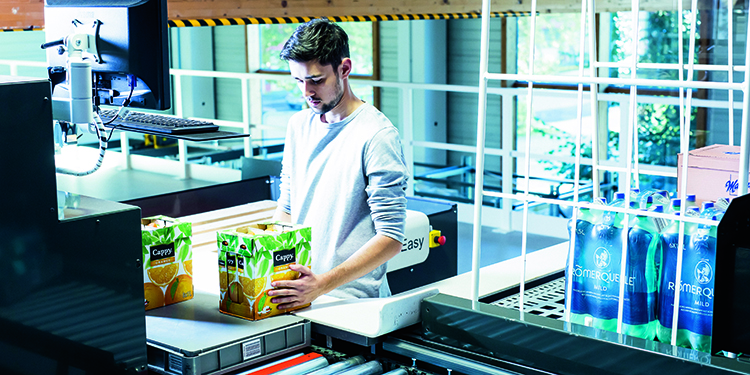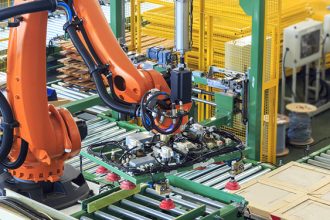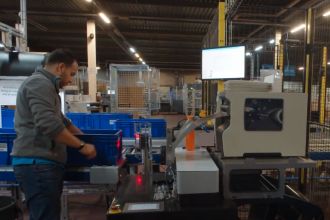
In addition to transporting, storing, retrieving, lifting and lowering totes, cartons or trays of products at high rates of speed — then delivering them to a workstation for an operator to access — goods-to-person automated storage and retrieval systems (ASRS) offer a variety of ergonomic and safety benefits within an operation. While the systems may appear at first glance to be highly complicated and potentially challenging to operate, it’s in fact quite the opposite.
Here are six ergonomic and safety advantages of ASRS technologies that are also easy to incorporate:
- ASRS systems are designed with operator safety in mind. A variety of safety sensors are integrated at key access points to identify the presence of an operator. If the operator’s arm or hand reaches into the machine beyond a certain safe point, the sensor detects the intrusion and triggers a command that stops the machinery, preventing entrapment or injury.
- These highly dense storage systems present the items required for order fulfillment to the picker in a goods-to-person format. That eliminates the travel time associated with walking from pick to pick in a traditional order fulfillment operation. Not only does this enable greater productivity, as wasted travel time is no longer necessary, but it also significantly reduces fatigue, which can contribute to accidents and injuries on the job. By allowing operators to continuously perform a task in one location, they are more likely to remain focused and alert.
- ASRS systems present items to workers at an optimal — waist-high — level. Picking items from within this “golden zone” does not require the bending, stretching, stooping, reaching, or twisting motions often required by manual picking operations. By supporting better ergonomics, overall workforce injury rates (and potential worker’s compensation costs) associated with strains and overexertion can be greatly minimized.
- Utilizing goods-to-person ASRS solutions allows pickers to remain in fixed locations, supporting adherence to pandemic-related social distancing guidelines. This greatly reduces the chances of employees crossing paths at multiple points within a warehouse. For additional safeguarding, plexiglass partitions can be placed between stations, further minimizing the risk of cross-contamination.
- The increase in order fulfillment throughput and productivity per associate supported by a goods-to-person ASRS enables an operation to keep pace with rising demands from e-commerce customers without hiring temporary, outside labor. An existing essential group of workers can continue to work safely among their colleagues without the increased risks of infection that could be introduced by seasonal employees.
- Finally, safe interactions with ASRS are typically guided by the equipment itself. The majority of ASRS solutions incorporate touch screens, graphical image displays, laser pointers, illuminating lights, and other cues that make it fast and easy to train an operator on the safe use of the system. By displaying each step visually, training time on the machinery is substantially reduced, allowing managers to focus on other warehouse and distribution center safety initiatives.
If you’re looking for more information about how goods-to-person ASRS solutions can address your operation’s workforce challenges, please contact the members of the Automated Storage and Retrieval Systems Industry Group of MHI.



